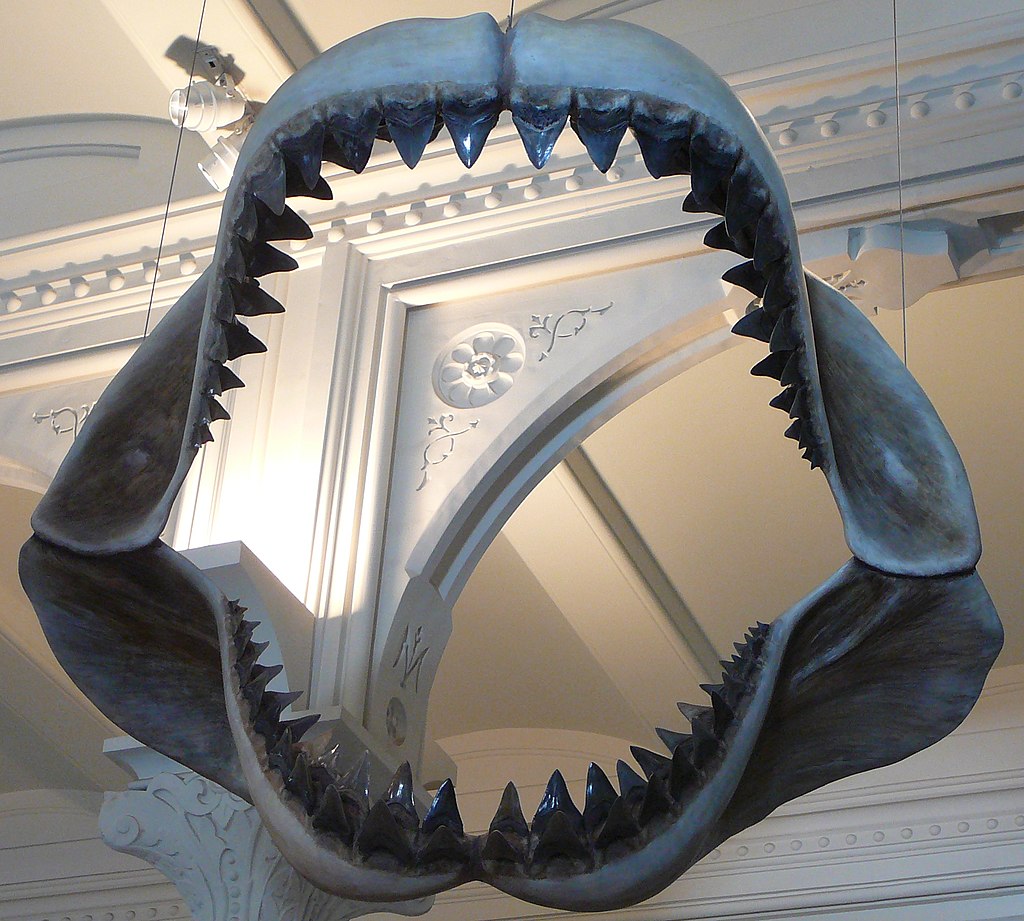#1: The Overall Appearance of the Megalodon
Based on what scientists know, the overall appearance of the Megalodon Shark is fairly accurately represented in the movie. The one in the movie has exactly six gills, which is likely correct, and the shape of the dorsal fin is also likely correct and was actually modeled after the great white shark.
Models of male or female Megalodons in the movie had distinctive modeling, or differences in anatomy that exist in real sharks. One example is “claspers” which are shark appendages that only the males have. These help to hold the female during mating season, and the male sharks had them in the movie while the females did not.
The one major difference is size. The size of the Megalodon in the movie was 20-25 meters or roughly 65.5 to 82 feet long. The largest known fossil is around 18 meters, which is 59 feet. The average fossils are smaller, about half that size, but it does show that close to 60 feet was possible.
Still, this puts it at least in the relative ballpark of the small ones in the movies being the right size as the largest ones in real life…and maybe since it is a horror/action flick we can give Hollywood a pass on keeping the exaggeration at least within reason.
#2: Some Real Life Science Was Acknowledged in Movies, Even if on a Surface Level
Movies don’t have a great track record for taking into account science known in the real world, but the movie Meg does a great job of giving at least a tip of the hat to a few things. It’s acknowledged in the movie that the Megalodon has been thought to be extinct for million years, which is true.
And puts it ahead of the hundreds of zombie movies where no one knows what’s going on because apparently zombie isn’t a word.
In addition to this, while the scene of a Megalodon fighting a giant squid isn’t proven (and didn’t happen as it’s not believed giant squids lived during this time period), it is believed that giant squids and large sharks have likely tangled in the past. There have also been signs of giant squids fighting whales, so the idea of a giant shark that is whale-sized mixing it up with a giant squid in modern waters actually is very likely.
#3: Schools of Great White Sharks May Have Contributed to the Megalodon’s Extinction
While it wasn’t likely as dramatic as the movie made it seem, fossil records show that great white sharks and Megalodons likely ate the same fish and other underwater animals for food. When a massive cooling and climate change event occurred, the smaller great whites had to eat less and so were able to ride out the changing extinction event better than the much bigger Megalodon, especially after many of the larger prey fish died out.
While there’s a lot that is made up or exaggerated in the Meg movie, there were more efforts than usual to have some degree of accuracy surrounding this truly terrifying prehistoric shark!

